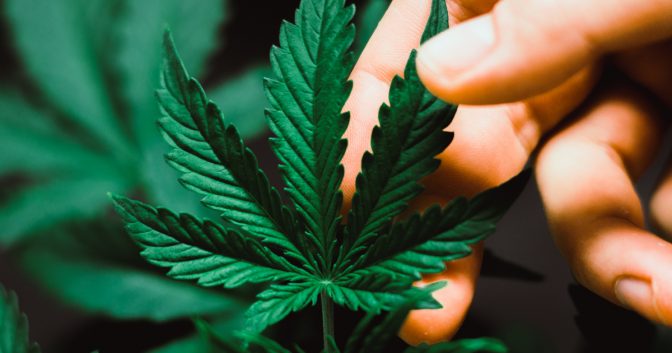Arcview Predicts $7.7 Billion California Cannabis Market by 2021

A new report from the Arcview Group and BDS Analytics—“California: The Golden Opportunity?”—predicts that the state’s marijuana industry will generate more than $7.7 billion in legal sales by 2021. While some of their underlying data are a little questionable, there’s no doubt that legal marijuana will be a multibillion industry in California.
According to the report, California produced 13.5 million pounds of cannabis in 2016, of which state residents consumed only 2.5 million pounds. Arcview and BDS get that figure from a California Department of Finance report on the medical-marijuana market, “Economic Impact Analysis of Medical Cannabis Cultivation Program Regulations,” from January 2017. By using three sources of information—registered farms, eradications, and mapped but unregistered farms—the department estimated that “total statewide production equals 13.5 million pounds.”
“Assuming casual users purchase one-eighth of an ounce (3.5 grams) per month and regular users purchase three-quarters of an ounce (21 grams) per month, total annual cannabis consumption in California is between 2.2 and 2.6 million pounds,” the state report said. “This analysis assumes that the quantity consumed equals 2.5 million pounds annually in California.”
Unregulated illegal activity is notoriously hard to track, so the estimate of how much marijuana California growers illegally produce and ship out of state should be taken with a massive crystal of salt.
The bigger problem is with the Finance Department’s estimate of how much people consume. It based the 2.5-milllion-pound figure on responses to the National Survey on Drug Use and Health, an annual survey conducted by the federal Substance Abuse and Mental Health Services Administration. People selected to participate are asked by government researchers how much pot they smoke and how often. Since the researcher promises that no employer or ex-spouse or law-enforcement officer will ever find out, we’re supposed to believe that people are answering honestly. In reality, people often lie about what drugs they use, how much and how often in such surveys.
The potential legal marijuana market in California is probably much larger than what Arcview and BDS project, which is great news for marijuana businesses.
Post-prohibition there are fewer reasons to lie, because answering truthfully is not an admission to criminal activity. Survey results in states like Colorado and Oregon, where adult use of marijuana is legal, are probably a lot closer to reality these days, but they’re still going to fall short.
The survey results of California marijuana use that the Arcview/BDS report relies on are from the prohibition period, so its consumption estimates are likely to be drastic underestimates. Interestingly, this means that the potential legal marijuana market is probably much larger than what Arcview and BDS project, which is great news for marijuana businesses.

Marijuana field in Fresno, California
Hard Lessons Yet to Be Learned
Now for the bad news: California cannabis growers can expect to learn that there’s not much profit in the agriculture business. Oregon, Washington and Colorado have all seen significant price declines since legal sales began in 2014. Even Alaska, which a year ago was reporting that pot was going for as high as $5,000 a pound wholesale, has recently seen wholesale prices drop with the increase of production and competition.
“Long-term, the price of cannabis in California is going to drop through the floor,” activist and entrepreneur Jeff Jones forecasts. “I expect by this time next year, we’re going to be talking about $200 outdoor pounds.”
If the experience in Oregon is any example, then Jones could be right. In fact, he may be an optimist. Tough as this is going to be for growers, the people who are really going to take a beating are the investors who got into the legal marijuana business expecting to see the kind of profits that illegal marijuana sales used to generate.
Comparisons With Other Legal Marijuana States
That brings us to another place where this new Arcview/BDS report falls short. They compare the potential California market with markets in legal states, but the data they’re using from those states is questionable.
This report says that Oregon wholesale prices are about $3.13 a gram. That’s about 50% too high. The average wholesale price on the legal market in Oregon at the beginning of 2018, according to the state, was just over $2 a gram, which is just over $900 a pound. Industry sources confirm that: The wholesale price of weed in Oregon is between roughly $300 and $1,200 a pound.
The overall message from the Arcview/BDS report is that regulations and taxes are too high. While that may be true, it’s not the only problem.
Arcview/BDS were a little sloppy on some other details as well. The report calls Oregon’s tax a 20% excise paid by the retailer. In fact, Oregon’s marijuana tax is a 17%-20% sales tax paid by the consumer to the retailer at the point of sale. The state’s base sales tax rate for marijuana is 17%, and counties and cities that allow marijuana retail sales may impose an additional sales tax of up to 3%.
It’s a minor detail, but it does raise a concern that the comparisons Arcview/BDS are making with legalization and revenue in other states may not be totally sound. The overall message from their report is that regulations and taxes are too high. While that may be true, it’s not the only problem.
The Elephant in the Room
The biggest difference between California and other legal states, at least in terms of prices and revenue, is that California created a middleman, the distributor, who stands between the grower and the seller. They not only distribute cannabis wholesale to retailers, they also collect the taxes for the state from both the producers and the retailers. That extra layer means added expense and hence higher prices for consumers. If California were really interested in undercutting the illegal market, slicing out the middleman would be a good place to start.
Purchase the report here.
Related Articles
In Defense of Weedmap’s Fight with California
Pounds Selling for $900 Wholesale in Oregon
Arcview Predicts $57 Billion World Cannabis Market by 2027
Recreational Legalization in California – How’s It Going?
If you enjoyed this Freedom Leaf article, subscribe to the magazine today!

